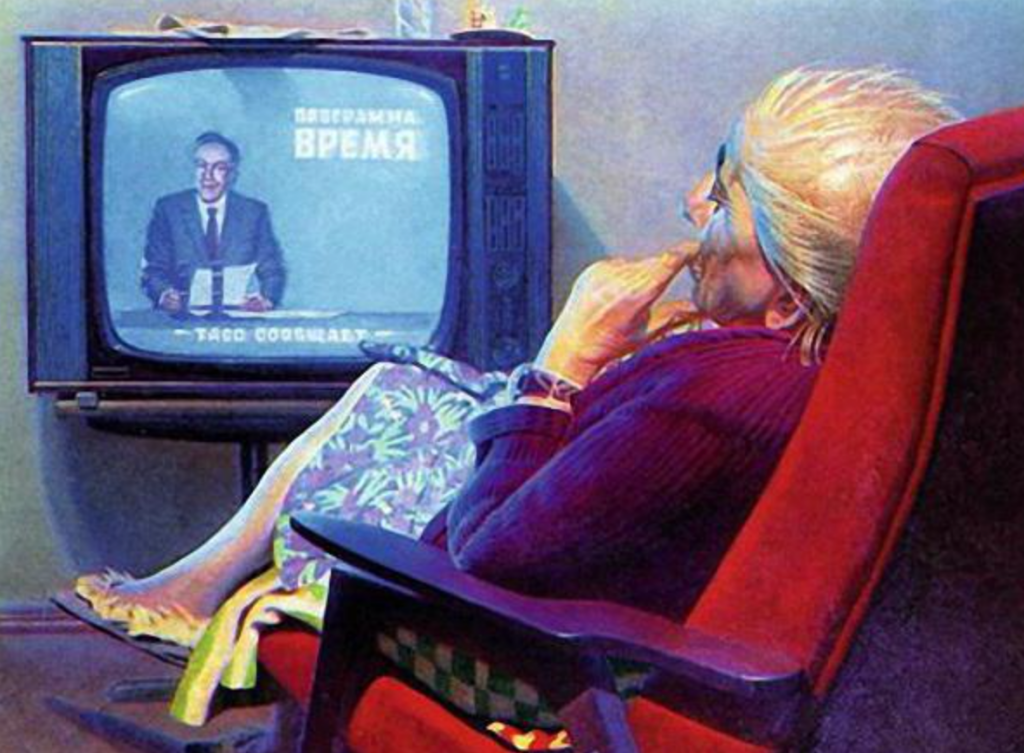Isabelle DeSisto graduated from Harvard University in May 2020 with a B.A. in Government and an M.A. in Regional Studies: Russia, Eastern Europe, and Central Asia.
What can the Holodomor teach us today about the importance of journalistic integrity and the dangers of historical revisionism?
This is the question I asked myself after watching Mr. Jones, a biographical thriller that chronicles one journalist’s struggle to unmask the horrors of Stalin’s man-made famine in Soviet Ukraine. Produced by Polish director Agnieszka Holland and Ukrainian-American screenwriter Andrea Chalupa, Mr. Jones is an uneven artistic production. At the same time, it offers timely lessons about what can befall a country when a corrupt media and tyrannical state converge.
The film is set in 1933, the year in which Adolf Hitler rose to power in Germany and Josef Stalin’s government engineered the Holodomor—a catastrophic famine that killed millions in the Ukrainian SSR. Gareth Jones, a Welsh journalist and advisor to former British prime minister David Lloyd George, sets out for Moscow with a puzzle: how has the Soviet government been financing its industrial boom?
The answer, he learns, is Ukraine: “Grain is Stalin’s gold,” and Ukraine the breadbasket of the USSR.
When he reaches the Soviet capital, Jones finds himself out of his depth. The journalist who tipped him off about a coverup in Ukraine is murdered. A surly hotel clerk informs him that his stay in Moscow’s elite Hotel Metropol has been cut short—and his visa bars him from seeking accommodation elsewhere. The pretty, mysterious New York Times reporter Ada Brooks peers around corners and speaks in hushed tones; she is being surveilled.
Life in Moscow is grim: secrecy and bureaucracy reign, while the foreign press corps is bewitched by the impressive results of Stalin’s First Five-Year Plan. Their ringleader, the sinister NYT bureau chief Walter Duranty, is a Stalin apologist who won a Pulitzer Prize for his reporting on the Soviet Union. Even Brooks is willing to rationalize the regime’s brutality.
Jones naively hopes to score an interview with Stalin. When that plan fails, he ditches his official escort and jumps on a train to Ukraine. Wandering through empty villages, knee-deep in snow, he pieces together the truth: peasants are starving while every precious ounce of grain is shipped off to Moscow.
Back in the UK, Jones struggles to share what he witnessed in Ukraine. Under immense pressure to stay silent, he publishes a report about the famine. But the film ends suddenly, leaving viewers wondering whether justice was ever served.
Director Angieszka Holland has proven her ability to portray intense human suffering; her most famous film, Europa Europa, tells the story of a German-Jewish boy fleeing the Holocaust. In Mr. Jones, people suffer silently. During Jones’ trip to Ukraine, dialogue is minimal, time passes slowly, and the film’s color palette dulls. Wars mean shouting and bloodshed; starvation means wasting away.
The film’s most striking scenes need no sound. In one, Jones sneaks onto a train heading to rural Ukraine. As he hunkers down to blend in with his fellow passengers, he pulls an orange out of his backpack. All heads turn in his direction. When Jones casually discards the peel, the malnourished Ukrainian peasants pounce on it.
In another scene, two Ukrainian children invite Jones to share a humble meal. Ravenous, he scarfs down the scrap of meat they offer him. Then he asks then where it came from. “Kolya,” says the girl. Quietly, she leads him to the garden behind their house and points to the lifeless body of her older brother, sprawled on a snowbank. Jones retches.
These scenes of desperation accentuate the hedonism of Walter Duranty’s expat orgies in Moscow, where liquor overflows and famed journalists strut around naked. As the Soviet capital buzzes, rural Ukraine withers.
Other aspects of Mr. Jones are less successful. For example, characters lack nuance: power-hungry Duranty is a perfect foil to courageous Jones, but the contrast is simplistic. If only people could be separated so easily into good and evil.
Relationships between characters are similarly stiff. The whirlwind romance between Brooks and Jones feels out of place, as if the filmmakers worried they could not hold the attention of a modern audience without a love interest. But perhaps that is the point: human interactions cannot be authentic in a climate of paranoia and fear.
The film tries to get creative by inserting elliptical scenes showing a young Eric Arthur Blair as George Orwell typing his dystopian novella Animal Farm. Orwell was an open critic of Stalin; Animal Farm is typically interpreted as an allegory of the Russian Revolution and Stalin’s totalitarian regime. Mr. Jones implies that Orwell was inspired by Jones’s reporting, yet although the two were contemporaries, there is no evidence they ever met.
This Orwell subplot adds an additional layer to the film, but it is underdeveloped. Ultimately, it creates confusion and detracts from Jones’ story.
The ending of the film leaves something to be desired as well. Jones publishes his story, suggesting that perhaps the British and American governments will take action against Stalin’s reign of terror. But in the credits, we learn that Jones died soon after in a mysterious accident during a reporting trip to Inner Mongolia. The U.S. and the USSR established diplomatic relations in 1933, and Duranty’s Pulitzer was never rescinded. Although Mr. Jones ends ambiguously, the history is clear: the result of Jones’s reporting was not justice, but further silence.
Yet despite its flaws, the film offers viewers important lessons for the present. Much has changed in the decades since Jones made his fateful trip to Soviet Ukraine, but the challenges he faced in telling the truth still resonate today.
In Stalin’s Soviet Union, members of the domestic and foreign press were submissive, even as forced collectivization and terror wracked the country. Today, as media manipulation and “fake news” obscure facts and journalists across the globe face pressure from political elites, Mr. Jones is a cautionary tale. Without a strong, independent media, prospects for sustaining a healthy democracy are bleak.
Mr. Jones also sends a message that countries must grapple with dark chapters of their pasts. For decades, the Soviet government systematically covered up evidence of the Holdomor. Today, Ukraine, the United States, and many other countries recognize the famine as a genocide — Russia still does not. Spreading the truth brings justice to victims and their families and ensures that the lessons of history do not go unlearned.
The United States and former Soviet countries continue to confront their histories. Americans are tearing down Confederate statues and calling for universities to shed the names of benefactors with ties to slavery. Across the former USSR, citizens and governments wrestle with the legacy of communism. In some cases, they acknowledge crimes and suffering; in other cases, denial prevails.
Polls show that Stalin’s popularity is on the rise in Russia. In a recent panel organized by the Atlantic Council, Agnieszka Holland said that no Russian distributors bought the rights to show Mr. Jones in theaters. She claimed that many Russians are still unaware of the scope of the famine and the role Stalin’s government played in creating it. Hopefully Mr. Jones can begin to change that.
Mr. Jones is not a perfect film, but its significance extends beyond the screen. In 1933, truth was a precious commodity; in 2020, it will take the courage and integrity of people like Gareth Jones to ensure it is not in short supply.



